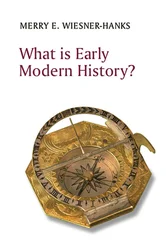R. Nisbet Bain - The Cambridge Modern History
Здесь есть возможность читать онлайн «R. Nisbet Bain - The Cambridge Modern History» — ознакомительный отрывок электронной книги совершенно бесплатно, а после прочтения отрывка купить полную версию. В некоторых случаях можно слушать аудио, скачать через торрент в формате fb2 и присутствует краткое содержание. Жанр: unrecognised, на английском языке. Описание произведения, (предисловие) а так же отзывы посетителей доступны на портале библиотеки ЛибКат.
- Название:The Cambridge Modern History
- Автор:
- Жанр:
- Год:неизвестен
- ISBN:нет данных
- Рейтинг книги:4 / 5. Голосов: 1
-
Избранное:Добавить в избранное
- Отзывы:
-
Ваша оценка:
- 80
- 1
- 2
- 3
- 4
- 5
The Cambridge Modern History: краткое содержание, описание и аннотация
Предлагаем к чтению аннотацию, описание, краткое содержание или предисловие (зависит от того, что написал сам автор книги «The Cambridge Modern History»). Если вы не нашли необходимую информацию о книге — напишите в комментариях, мы постараемся отыскать её.
The first series was planned by Lord Acton and edited by him with Stanley Leathes, Adolphus Ward and George Prothero.
The Cambridge Modern History Collection features all five original volumes:
Volume I: The Renaissance
Volume II: The Reformation, the End of the Middle Ages
Volume III The Wars of Religion
Volume IV: The 30 Years' War
Volume V: The Age of Louis XIV
The Cambridge Modern History — читать онлайн ознакомительный отрывок
Ниже представлен текст книги, разбитый по страницам. Система сохранения места последней прочитанной страницы, позволяет с удобством читать онлайн бесплатно книгу «The Cambridge Modern History», без необходимости каждый раз заново искать на чём Вы остановились. Поставьте закладку, и сможете в любой момент перейти на страницу, на которой закончили чтение.
Интервал:
Закладка:
In recent times Dom Henrique has been named Prince Henry the Navigator,-a title founded on the supposition that his expeditions mainly aimed at the extension of nautical enterprise for its own sake, or had for their conscious though remote object the discovery of the sea-route to India and the westward exploration of the Atlantic Ocean. It has even been stated that the town founded by him on the southernmost point of the Sacred Promontory, the westernmost angle of which bears the name of Cape St Vincent-a town now represented by the little village of Sagres-was the seat of a school of scientific seamanship, and that his aim was to train up for the national service a continuous supply of intrepid and accomplished sailors, destined in the third and fourth generation to perform the memorable feats associated with the names of Da Gama and Magalhaes. All this must be dismissed as illusory, and the picturesque title “ the Navigator” is calculated to mislead. There is nothing to show, or even to suggest, that Dom Henrique was ever further away from Portugal than Ceuta and its immediate neighbourhood, or that he had formed any plans for the extension of ocean navigation beyond a point long previously reached by the Genoese, or ever thought of the route round the southernmost point of Africa as a practical route to India. A more truthful clue to the aims of his life occurs near the beginning of his last will, wherein, after invoking “my Lord God” and “my Lady Saint Mary for that she is the Mother of Mercy,” he beseeches “my Lord Saint Louis, to whom I have been dedicated from my birth, that he and all Saints and Angels will pray God to grant me salvation.” The model of conduct and policy affected by Dom Henrique was the heroic and sainted French King who had flourished two centuries before. Louis, after ascertaining by disastrous experience the impracticability of driving the Saracens from the Holy Land and Egypt, had sought to convert the Sultanate of Tunis into a dependency of France as the first step in recovering northern Africa for Christendom. In some respects the plan of Dom Henrique was easier of achievement than that of Louis. Islam having not yet overspread Bilad Ghana, it would be far less difficult to conquer and convert its undisciplined savages to the Gospel, than to drive a wedge into the heart of Mohammadan North Africa by the conquest of Tunis. Both schemes were late offshoots of the crusading spirit; Dom Henrique’s plan was among its last manifestations. As in the case of the later Crusades, this plan was largely inspired by political objects. The Villa do Iff’ante on the Sacred Promontory was destined to be the maritime centre of the united empire of Peninsular Portugal and Greater Portugal-the latter comprising the Madeira group and the Azores, together with Bilad Ghana, and whatever else the Iff’ante might annex to the ancient dominion of Portugal and Algarve. It was a sacred spot; for hither the Christians of Valencia had fled, seven centuries before, from the terrible Abd-ur’rahman Adahil, carrying with them the body of St Vincent, from whose last burial-place the westernmost promontory of Europe thenceforth took its name.
In 1441, twenty-six years after the capture of Ceuta, and the year after Terceira, the first among the Azores to be discovered, had been reached, a sudden impetus was given to the Iffante’s project. Antam Goncalvez had sailed to the Rio do Ouro for sealskins and oil. Having secured his cargo, he landed with nine armed men on the shore of the inlet, and after a desperate struggle with a solitary naked African succeeded in wounding and capturing him. To this feat he added that of cutting off a female slave from her party, and securing her also. Shortly afterwards Nuno Tristam, a knight highly esteemed by Dom Henrique, arrived at the Rio do Ouro with a caravel, intending to explore the coast beyond Angra de Cintra in search of captives. Fired by the exploit of Goncalvez, Tristam landed, marked down a party of natives, and after killing several captured ten men, women, and children, including a personage who ranked as a chief. After exploring the coast, with no further success, as far as Cape Branco, Tristam followed Goncalvez to Portugal, where they joyfully presented to the Iffante the long-desired first-fruit of his projects. Chroniclers dwell complacently on the joy experienced by the Iffante, commensurate not to the value of the slaves actually taken but to the hope of future captures, and on his pious rapture at the prospect of saving the souls of so many African heathen. Dom Henrique now sought and obtained from the Pope a special indulgence for all who should fight under the banner of the Order of Christ for the destruction and confusion of the Moors and other enemies of Christ, and for the exaltation of the Catholic faith. He further procured from his brother Dom Pedro, regent of the kingdom, an exclusive right of navigation on the West African coast, and a surrender of the whole of the royalties due to the Crown on the profits of these voyages. A new stimulus was given to the enterprise by the discovery that captives of rank could be held to ransom, and exchanged for several slaves. In the following year (1442) Goncalvez obtained ten slaves in exchange for two captured chiefs, and brought back a little gold dust and some ostrich eggs. In the next year Tristam passed in his caravel beyond Cape Branco, and reached the island of Arguin. Fortune favoured him in an unusual degree, for he returned with his caravel laden with captives to its full capacity. The success of the enterprise was now assured, and in the next year it was prosecuted on a more extensive scale. The people of Lagos, the port where the captured slaves were landed, roused by the prospect of still greater gains, made preparations for seeking them, by way of joint-stock enterprise, on a larger scale than heretofore. The Iffante licensed an expedition consisting of six caravels, the command being given to Lanzarote, receiver of the royal customs at Lagos, and presented each with a banner emblazoned with the cross of the Order of Christ, to be hoisted as its flag. Lanzarote and his companions raided the coast as far as Cape Branco, shouting “Santiago! San Jorge! Portugal!” as their war-cry, and ruthlessly slaying all who resisted, whether men, women, or children. They brought back to Lagos no less than 235 captives; the receiver of customs was raised by the Iffante to the rank of knight, and the wretched captives were sold and dispersed throughout the kingdom. Large tracts, both of Portugal and Spain, remained waste or half cultivated as a result of the Moorish wars: and the grantees of these lands eagerly purchased the human chattels now imported in increasing numbers.
The project of Dom Henrique had now made an important advance. Its ultimate success appeared certain; and the Iffante resolved that a direct effort should be made to reach Bilad Ghana itself, through which the “ Western Nile” rolled its waters from the highlands of Abyssinia and the Christian realm of “ Prester John.” A certain equerry was commanded to go with a caravel straight for Guinea, and to reach it without fail. He passed Cape Branco, but was unable to resist the temptation of a profitable capture on his route. Landing on one of the islands near the Bank of Arguin, he and his men were surprised by a large party of natives, who put off from the mainland in canoes, and killed most of the raiders, including their commander. Five only returned to Portugal. Diniz Diaz, an adventurer of Lisbon, claimed about the same time to have passed the Senegal river, to have sailed along the thirty-four leagues of coast which separate it from Cape Verde, and on the strength of having on his way picked up a few natives in canoes, to haye been the first to bring back real “ Guinea negroes “ for the Portuguese slave-market. How far his claim to this distinction is sustainable, is left an open question by the authorities. The wave of African enterprise was now steadily gaining strength. The Iffante readily licensed all intending adventurers, and the coast, long unfrequented by the European sailor, swarmed with caravels. In 1445 twenty-six vessels, fourteen of which belonged to Lagos, left that port under the command of the experienced Lanzarote, specially commissioned to avenge the IfFante’s unfortunate equerry who had fallen as a protomartyr on the African shore, carrying the Cross-emblazoned banner of the Order of Christ. Six of these fulfilled the Iffante’s direction to push on to the “River of Nile,” and land in Bilad Ghana. The palm-trees and other rich vegetation, the beautiful tropical birds which flitted round their caravels, the strange kinds of fish observed in the waters, gave promise of the approaching goal; and at length the voyagers beheld the sea discoloured by the muddy waters of the Senegal to a distance of two leagues from land. Scooping these up in their hands, and finding them fresh, they knew that their object was attained, sought the river’s mouth, anchored outside the bar, launched their boats, captured a few hapless negroes, and returned to Dom Henrique, picking up more captives on the way, with the welcome intelligence that his desires were at length accomplished, that the “ River of Nile” had been reached, and the way opened to the kingdom of Prester John.
Читать дальшеИнтервал:
Закладка:
Похожие книги на «The Cambridge Modern History»
Представляем Вашему вниманию похожие книги на «The Cambridge Modern History» списком для выбора. Мы отобрали схожую по названию и смыслу литературу в надежде предоставить читателям больше вариантов отыскать новые, интересные, ещё непрочитанные произведения.
Обсуждение, отзывы о книге «The Cambridge Modern History» и просто собственные мнения читателей. Оставьте ваши комментарии, напишите, что Вы думаете о произведении, его смысле или главных героях. Укажите что конкретно понравилось, а что нет, и почему Вы так считаете.












